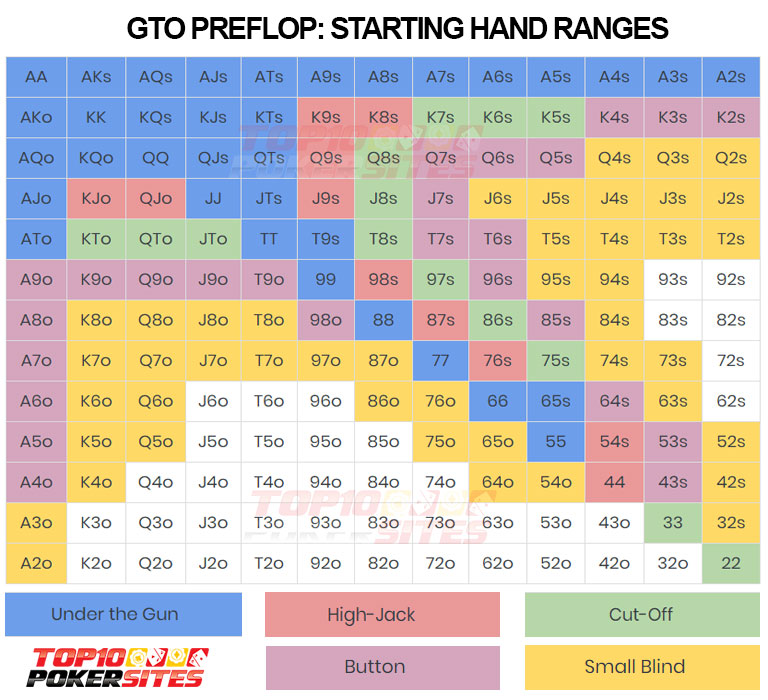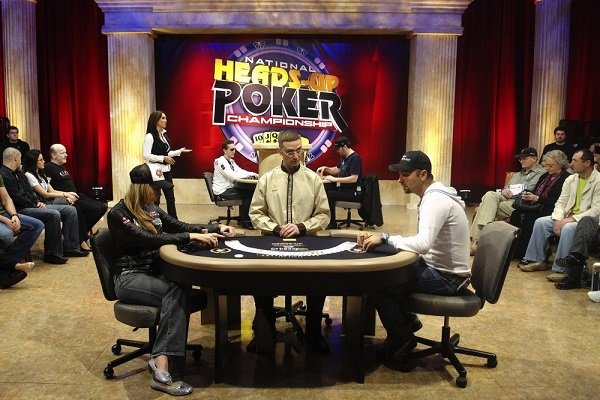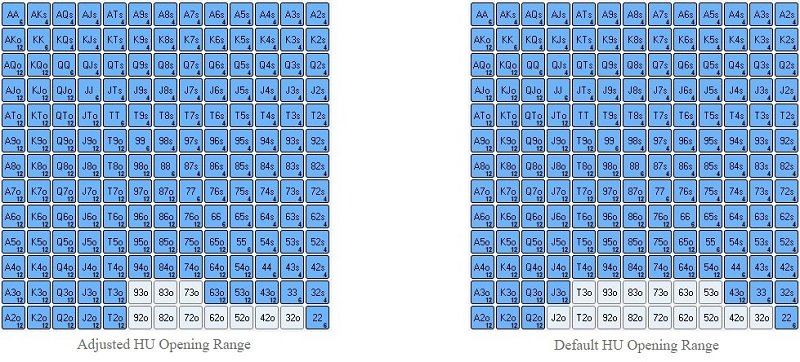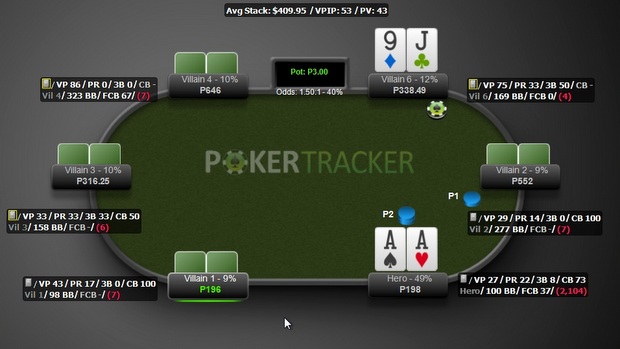Heads Up Holdem Strategy
- Heads Up Hold'em Strategy Cheat
- Heads Up Hold'em Strategy
- Heads Up Holdem Casino Game Strategy
- Heads Up Hold'em Strategy Strategies
- Wpt Heads Up Holdem Strategy
- Heads Up Poker Strategy Daniel Negreanu
Tournament strategy no-limit hold’em stack sizes starting hand selection preflop strategy sit & go strategy online poker short-handed strategy satellite strategy heads-up strategy In this Series. Poker Strategy Articles 5 Browse through hundreds of poker strategy articles created by winning poker coaches. Our poker strategy explores cutting edge poker concepts to ensure that you're always at the top of your game - Because that's how winners are made. Full-Limit Hold’em (FLHE) Minimum Buy-in Chart NOTE: All stakes of FLHE, including micro stakes can generally be found online. If Limit Hold’em is offered in a live setting, generally stakes will start at either $1/$2 or $2/4.
Once heads up is achieved in a home game or pub poker tournament, the most common questions that I hear is, “who goes first?” “who gets dealt the first card?” or “who has the button?” In fact, the most common time that gameplay rule violations occur at the poker table is when I am down to heads up. This is because the rules for heads to head or one on one play in Texas Hold’em can be a bit confusing.
According to heads up poker rules, the dealer posts the small blind and the other player posts the big blind. The first card is dealt to the player in the Big Blind. The dealer acts first pre-flop and the big blind acts first on the flop, turn, and river. The dealer always goes last on the flop, turn, and river.
Why Does the Dealer Post the Small Blind?
If the blinds were reversed and the player on the button posted the big blind, the rules for order of play would be violated. In Texas Hold’em, the Big Blind is required to act last before the flop. Therefore, by default, the player on the button must post the Small Blind in heads-up play.
Additionally, if the dealer was the big blind and decided to fold, he would be folding his big blind to the small blind; another violation of the basic rules. Some might also argue that this “discounted” price of folding is part of the basic advantage of the button
Why Does the Dealer Go First Before the Flop?
The player on the button acts first for the same reason he posts the small blind, to maintain the correct order of play. Some might argue that acting last before the flop offers a type of position advantage and that the button should have that edge in heads-up. However, the button does not have that type of favor when there are 3 or more players at the table, so why should the rules alter when it’s down to heads up? The button never acts last pre-flop, no matter how many players are at the table.
Why Does the Big Blind Go First After the Flop?
The rules of poker state that the button must always act last after the flop. While this might seem like a departure from the rules, since the small blind does act first after the flop in non-heads-up play, it really isn’t. Indeed, it doesn’t matter what position a player sits in, if the button is involved in the hand, they are required to go first.
What If the Button Open Folds Before the Flop?
When the button folds, he relinquishes the small blind to the player in the big blind, the button moves, and the next hand begins. If the button just calls, the player in the big blind has the option to check back or raise. You may have heard the dealer say “option” to the big blind before.
Are Poker Odds Different in Heads-Up?
No. The math of poker remains exactly the same, no matter how many players are involved in the game. The cool thing is that calculating the odds is simplified since there are never any multi-way pots when you are playing one on one.
Are the Heads up Rules the Same for Cash Games and Tournaments?
Yes, the order of play and the rules for posting blinds remains exactly the same, no matter the format. The only real difference you will see, when watching cash versus tournaments, is that the latter often has antes paid in on top of the blinds.
Are These Rules the Same for Pot Limit Omaha?
Yes, the rules of heads-up play remain the same for all flop-style games that have a button and two blinds, including limit hold’em, no-limit hold’em, and Omaha.
Strategic Adjustments For Heads-Up Play
Once you have the rules of how one on one gameplay works, you can focus all of your attention on winning. The key to crushing the competition is in making targeted adjustments based on your opponent’s style of play.
The biggest adjustment that should be made when playing heads up revolves around how often you raise and call and how assertive you should be when it comes to fighting for pots. As a rule, as tables become more short-handed, your overall level of aggression should increase. When play is down to just you and one other people your level of aggressiveness should range anywhere from combative to downright maniacal. What controls your frequencies in this regard is the nature of your opponent.
In order to thrive in and succeed one-on-one, you have to drastically loosen your requirements for getting involved and continuing into later streets. As the old saying goes, it’s very hard to make a pair. Often, high card will be the best hand on the flop in a heads-up battle. Therefore, you definitely do not want to play fit or fold when there is only one other opponent.
Feel Out Your Opponent Early
The early stages of a heads-up match are very similar to boxing. Unless you are really familiar with how your opponent plays, you will need to feel him or her out in the first few hands. For the most part, my general strategy is to raise any two hands from the button but defend a bit on the tight side in the big blind. By using this method, here are a few things you are looking to find out along with the adjustments that you can make as a result:
Pre-Flop Heads-Up Adjustments
- Your Opponent Is Folding to Steals Often
Count your blessings if this is the case. Playing against a fit or fold opponent when down to two players is the best case scenario. Keep stealing any two cards until he or she adjusts. You may find that you have the majority of the chips before this happens! - Your Opponent Seems to Be Defending Every Time
If you open your first 5 hands and get called or raised 5 times, it may be time to re-evaluate your strategy. Even so, I would almost never reduce my opening frequency down below 50% in a heads up match. - Your Opponent Is Stealing Often
So your opponent has open-raised the first 8 hands or so in the match. It is time to start playing back at him and the best way to do this is to flat call all of your high card hands, even Q2o, and anything that is suited or has any flopability (is that a word)? For example, something like 74o is an easy flat against someone who opens practically any two cards. - Your Opponent Is Folding the Button Often
If your opponent is open-folding the button more than half the time, it is safe to tighten up your flatting and 3-betting range substantially. The free money you are getting from your opponent’s folds means that you are practically free rolling the big blind. How cool is that? Ramp up the aggression on the button and the match will be over soon (usually in your favor).
Post-Flop Heads-Up Strategy
Your opponent’s pre-flop tendencies will tend to bleed over into their post-flop play. Therefore, if a person is stealing wide pre-flop expect them to bluff a lot and take very weak ranges to later streets
Summary
In live games where the players do the dealing, heads up play is the most common part of a tournament that the gameplay rules of poker are violated. More frequently than you might think, either the incorrect person gets dealt to first or the order of play is reversed.
It makes sense that sometimes people forget the heads-up rules since it can be rather rare to make it to heads-up in a tournament. It’s easy to see how the rules can be forgotten when a player might only achieve heads up once every few months. Even so, once the reasons behind why the dealing and playing order are understood, it all makes perfect sense.
Once you have the rules down, I suggest that you spend a few hours practicing at home with a family member. That way the heads up rules will be followed to the tee next time you find yourself as one of the last two players in your next local event. Besides, you should be focusing on adjusting your strategy and beating your opponent, not on who goes first or whatever. Good luck, now go win that thing!
To mix things up a bit, I spent one evening playing limit hold’em heads-up tournaments
Limit stands for fixed bet sizes and a fixed number of bets.
My first idea was to spend the whole evening playing limit hold’em heads-up tournaments on various stakes. But the problem was that there wasn’t much action going on on Tuesday evening in PokerStars.
Fixed Limit Heads-Up Strategy
My strategy was to open close to 80% of hands from the button and call quite liberally from the small blind. In limit hold’em, you basically always get the pot odds to call a bet. Fixed limit games have two bet sizes, the small bet and the big bet. The small bet is used before and on the flop. On the turn and river, the bet size is double.
Therefore you get 1:3 odds to call a bet from the button (big blind). You need only 33% of equity to make a profitable call. For example, AK is only 67% favorite to win 72, that’s why we can call basically with every hand. In practice, it is not advisable because you’re not able to realize your equity and it would be impossible to play the part of the range profitable post-flop. This is the reason why we should fold the bottom of our range, for example, 72 offsuit.
I noticed that being heads-up in full-ring limit hold’em is quite different from playing heads-up in a “heads-up tournament”. The reason is the betting order. In full ring heads-up situation, the small blind acts first and will NOT have the possibility to act from the position. In a heads-up limit tournament, the small blind HAS the position and possibility to act last. This changes the dynamics of the game and we have to adjust our standard fixed limit strategy. For example, in full-ring I often check-raise all kinds of backdoor draws, like gutshots, backdoor flush draws, but in heads-up I was making more donk-bets because of the betting order.
In heads-up limit hold’em most important decisions are made on the flop. We should have a good basic understanding of which hands we should check-raise and which hands are good for calling on multiple streets. It might not be a surprise, but aggression is a key element in this format. One common mistake is to call until the end, every time you have some kind of a hand (for example 4th pair). Although the fixed limit favors merged raising range, with value hands, I like to have some low suited connectors or suited one-cappers in my raising range.
5 important tips to success in Limit Texas Hold’em Heads-Up
- Play a lot of hands from the button, I would advise close 80%.
- Play straight forward and fast. When you have a good hand you should bet and continue betting to protect your hand.
- Calculate pot odds; you need to have a clear understanding of how to calculate odds. There are a lot of No-Limit players who have the ability to play winning poker with their experience and without calculating. In limit poker that is not possible.
- Play a lot of weak hands from the big blind, because you get 1:3 pot odds.
Getting The Nuts on Every Hand

Heads Up Hold'em Strategy Cheat
I soon found out that there weren’t many games going on Tuesday evening. Finally, I spotted a fixed limit regular (yes, there is one) in several micro and low-stakes tables and I decided to challenge him. The match went back and forth but I think in the end I got a small edge when the blinds were higher with aggression. The tournament was a Turbo and it still lasted 23 minutes.
One hand from the match: the blinds are 25/50 and I have $1195 and the villain has $1805. The villain bets from the button and I raise with K♥A♦. The villain calls my raise and the flop lands 3♣9♠5♠. The flop doesn’t hit villain’s bet-call range so I decide to make a continuation bet. The villain calls and the turn
The river is 7♣ and a couple of straight draws complete (T8, 68 and 46), but they all are very unlikely because the villain did raise before the flop. Also, backdoor flush draw completes but it seems very unlikely. All things considered, I think you can go both ways here. Check-call is reasonable and raise-call is okay. In my opinion, check-fold is the biggest mistake you can make in this spot. I bet third time on the river and the villain folds.
Heads Up Hold'em Strategy

I was able to play another tournament as well. It lasted only 11 minutes and I was in total god-mode. To be honest I don’t remember running this good in years. Too bad it happened in $3,5 fixed limit heads-up match and not in a high-roller. Regardeless, I absolutely crushed my enemy and I hit every possible backdoor draw that has ever been invented.
Is Limit Heads-Up Solved?
Heads Up Holdem Casino Game Strategy
An interesting fact about fixed limit heads-up is that it was defined as the first essentially solved game of poker. Cepheus was the first program that could play limit heads-up in such manner, that there is only an extremely small margin by which, in theory, the computer might be beaten by skill. Cepheus strategy was very close to the Nash Equilibrium strategy for fixed limit heads-up. You can still play against Cepheus on the University of Alberta website.
A new computer algorithm can play one of the most popular variants of poker essentially perfectly. Its creators say that it is virtually “incapable of losing against any opponent in a fair game”. Philip Ball, 2015
Heads Up Hold'em Strategy Strategies
Final Thoughts on Heads-Up Limit Hold’em


Wpt Heads Up Holdem Strategy

Heads Up Poker Strategy Daniel Negreanu
First of all, it was very fun to play heads-up fixed limit tournaments on PokerStars. While playing fixed limit, you don’t feel the same kind of pressure as in the no-limit games. I also liked that fixed limit is more math-based and you actually need to calculate pot odds and your equity to make profit.
The biggest downside was that there weren’t many games going on and the fixed limit seems to be halfway dead poker variant at the moment. One thing that will keep limit hold’em relevant in the future, is mixed games. Fixed limit hold’em is in the rotation of 8-game and HORSE. Players who want to succeed in the two abovementioned games, need to know fixed-limit hold’em as well. I also praise the WSOP that they have kept the $1500, $3000 (short-handed) and $10 000
When it comes to the PokerStars’ sit and go tournaments, I think the biggest downside was the structure at the beginning of the tournament, even though it was a turbo. In my opinion, the stack sizes were too big (or blinds too small) for quite a while in the beginning, and when the blinds started to rise I thought that the structure was way too fast.
PS. I strongly advise using a heads-up display while you are playing fixed-limit hold’em. It gives you a better picture of what kind of 3bet/limp/bet ranges villains have.